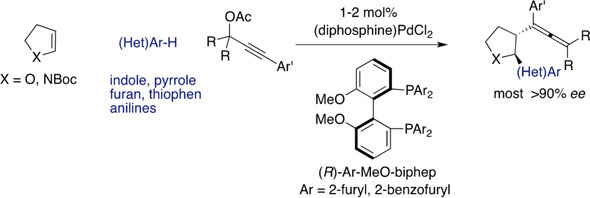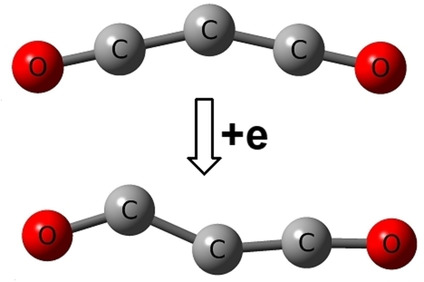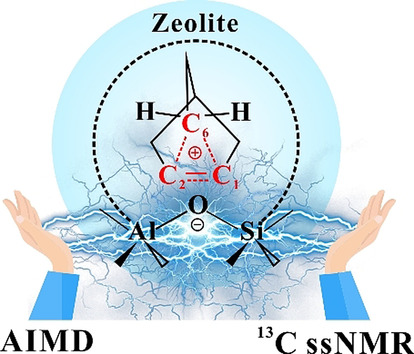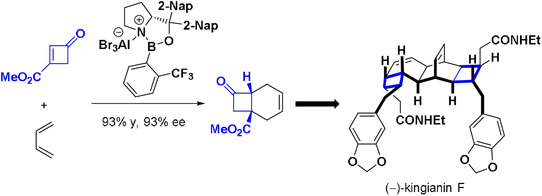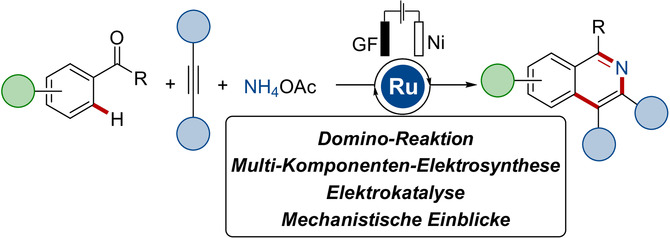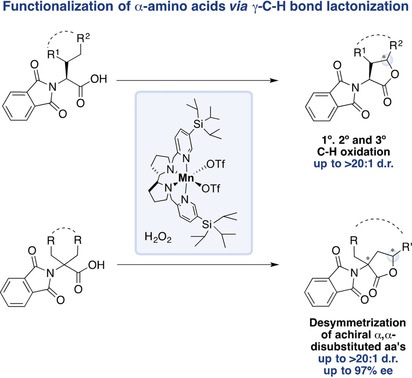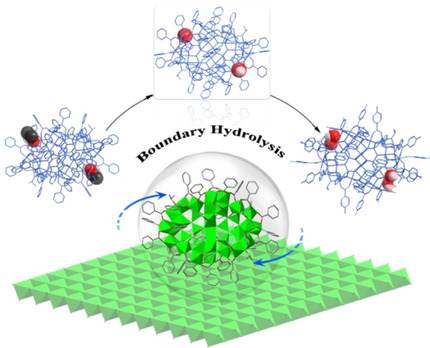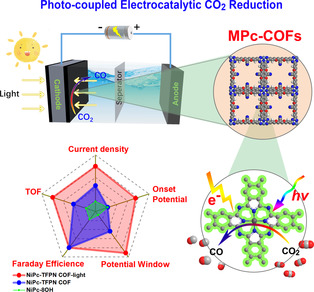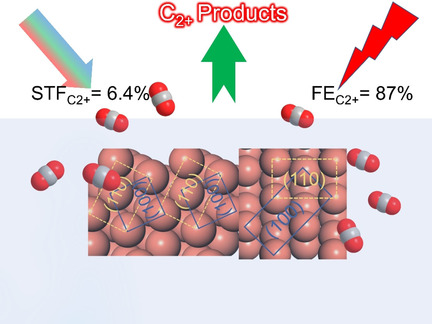Journal list menu
Export Citations
Download PDFs
Titelbild
Titelbild: Selbstregeneration und Selbstheilung in DNA-Origami-Nanostrukturen (Angew. Chem. 9/2021)
- Page: 4429
- First Published: 04 January 2021
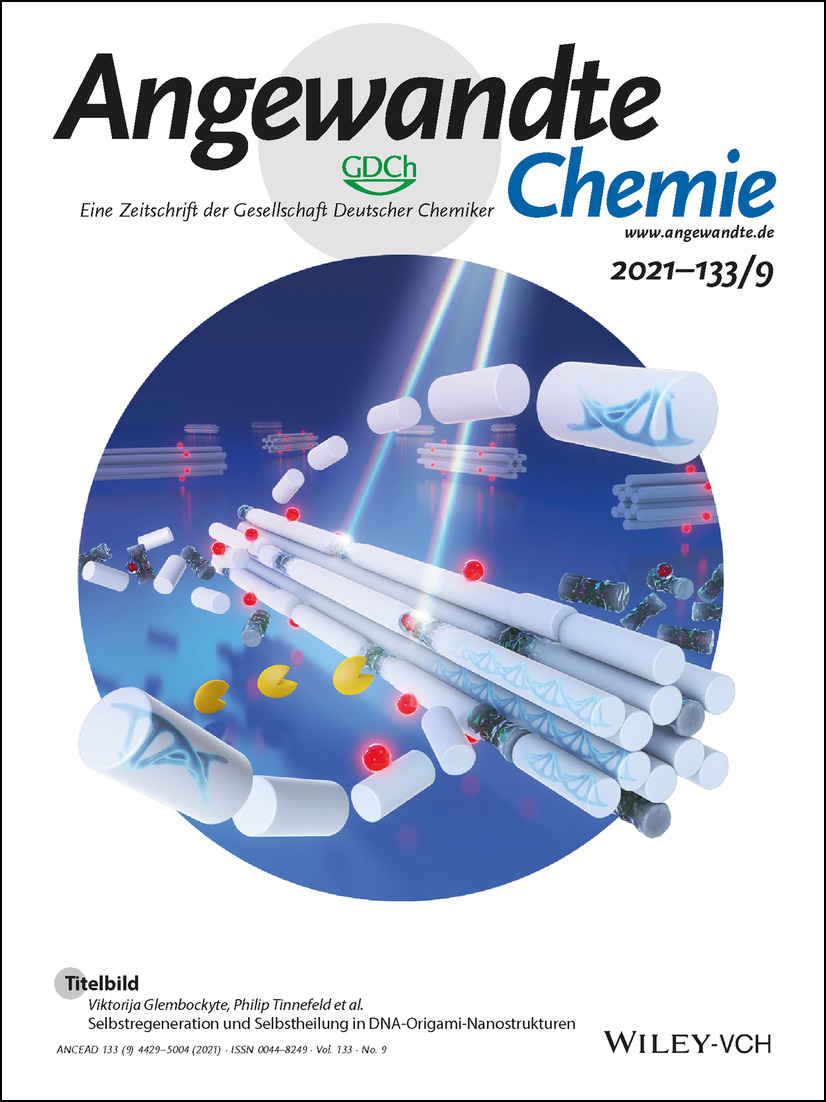
Inspiriert von den Selbstreparaturmechanismen der Natur auf molekularer Ebene wenden Viktorija Glembockyte, Philip Tinnefeld et al. in ihrem Forschungsartikel auf S. 4982 dynamische Selbstregeneration und schadensspezifische Selbstheilungsmechanismen auf DNA-Origami-Nanostrukturen an und zeigen, wie diese zu einer verbesserten Leistungsfähigkeit von Nanomaßstäben und Helligkeitsmarkern führen können.
Innentitelbild: Dodecameric Anion-Sealed Capsules based on Pyrogallol[5]arenes and Resorcin[5]arenes (Angew. Chem. 9/2021)
- Page: 4430
- First Published: 01 February 2021
![Innentitelbild: Dodecameric Anion-Sealed Capsules based on Pyrogallol[5]arenes and Resorcin[5]arenes (Angew. Chem. 9/2021) Volume 133 Issue 9, 2021](/cms/asset/c902b6f0-896a-4d07-9004-2ca9a48a867e/ange202100816-toc-0001-m.jpg)
Anionenversiegelte Kapseln werden über Wasserstoffbrücken zwischen Pyrogallol[5]arenen oder Resorcin[5]arenen mit Anionen gebildet, wie Agnieszka Szumna et al. in ihrer Zuschrift auf S. 4590 beschreiben. Die Kapseln haben eine dodekaedrische Geometrie und existieren in THF und in Benzol, aber nicht in Chloroform, was auf kompetitive Effekte bei der Anionensolvatation hinweist. Es wird auch gezeigt, dass eine mechanochemische Vorbehandlung (Trockenmahlen) der festen Proben unerlässlich ist, um die Selbstorganisation in Benzol zu initialisieren.
Innenrücktitelbild: Ultrathin Porous Carbon Nitride Bundles with an Adjustable Energy Band Structure toward Simultaneous Solar Photocatalytic Water Splitting and Selective Phenylcarbinol Oxidation (Angew. Chem. 9/2021)
- Page: 5003
- First Published: 04 February 2021
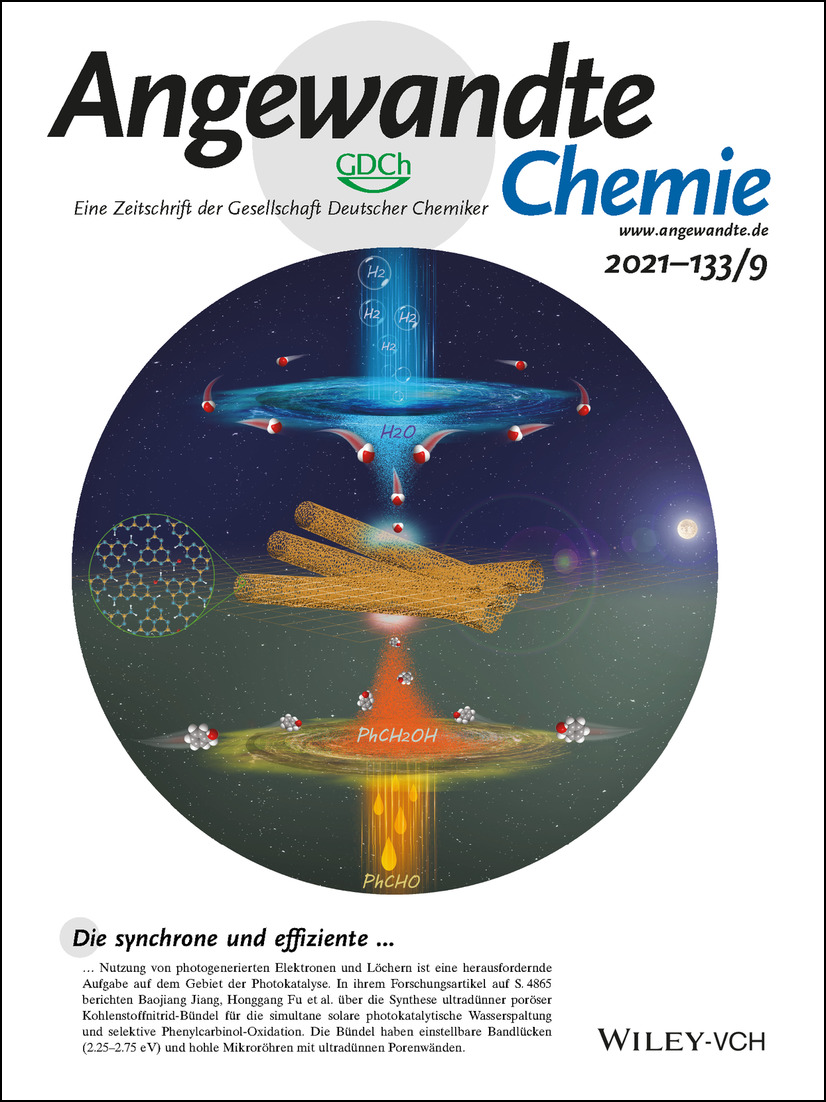
Die synchrone und effiziente Nutzung von photogenerierten Elektronen und Löchern ist eine herausfordernde Aufgabe auf dem Gebiet der Photokatalyse. In ihrem Forschungsartikel auf S. 4865 berichten Baojiang Jiang, Honggang Fu et al. über die Synthese ultradünner poröser Kohlenstoffnitrid-Bündel für die simultane solare photokatalytische Wasserspaltung und selektive Phenylcarbinol-Oxidation. Die Bündel haben einstellbare Bandlücken (2.25–2.75 eV) und hohle Mikroröhren mit ultradünnen Porenwänden.
Rücktitelbild: In Situ Observation of Non-Classical 2-Norbornyl Cation in Confined Zeolites at Ambient Temperature (Angew. Chem. 9/2021)
- Page: 5004
- First Published: 04 February 2021
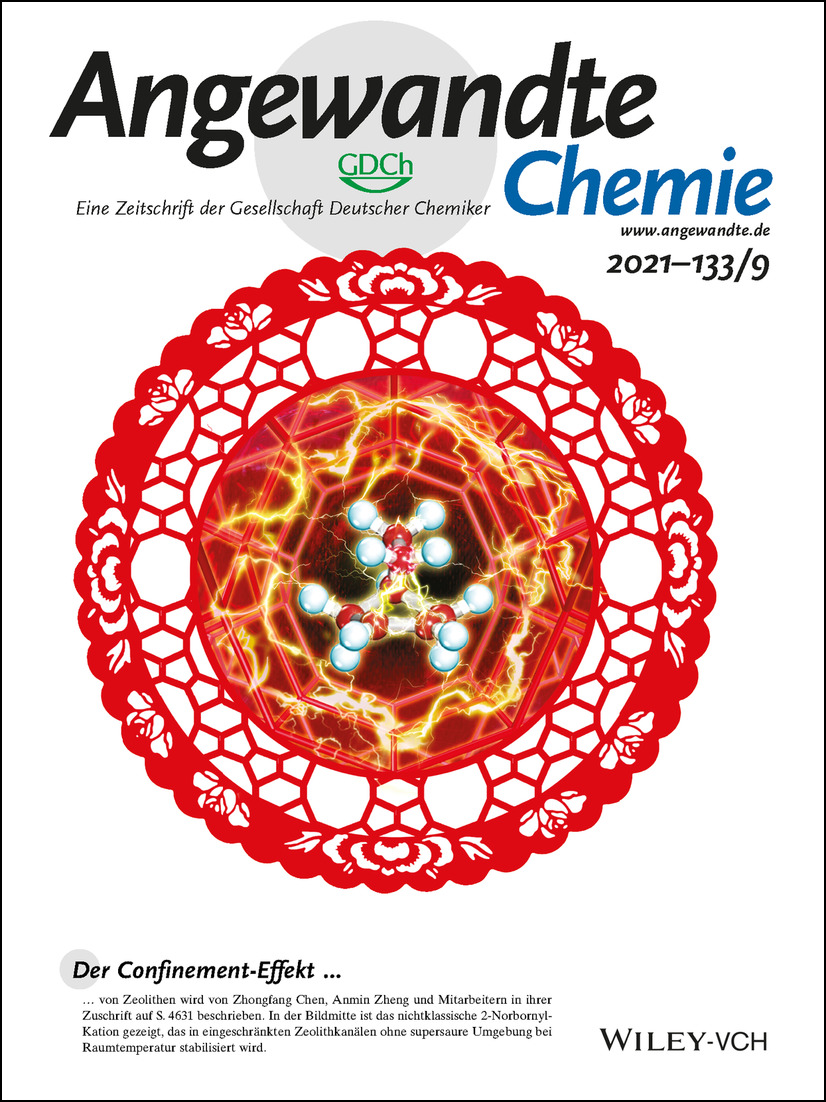
Der Confinement-Effekt von Zeolithen wird von Zhongfang Chen, Anmin Zheng und Mitarbeitern in ihrer Zuschrift auf S. 4631 beschrieben. In der Bildmitte ist das nichtklassische 2-Norbornyl-Kation gezeigt, das in eingeschränkten Zeolithkanälen ohne supersaure Umgebung bei Raumtemperatur stabilisiert wird.
Frontispiz
Frontispiz: A Stable [4,3]Peri-acene Diradicaloid: Synthesis, Structure, and Electronic Properties
- First Published: 16 February 2021
![Frontispiz: A Stable [4,3]Peri-acene Diradicaloid: Synthesis, Structure, and Electronic Properties Volume 133 Issue 9, 2021](/cms/asset/a7d0547c-5199-4bc2-80b6-6321981ca909/ange202180961-toc-0001-m.jpg)
Organische Elektronik Die Synthese, Struktur und elektronischen Eigenschaften eines stabilen [4,3]Periacen-Diradikaloids werden in der Zuschrift von Chunyan Chi et al. auf S. 4514 vorgestellt.
Frontispiz: Racemic Monomer-Based One-Handed Helical Polymer Recognizes Enantiomers through Auto-Evolution of Its Helical Handedness Excess
- First Published: 16 February 2021
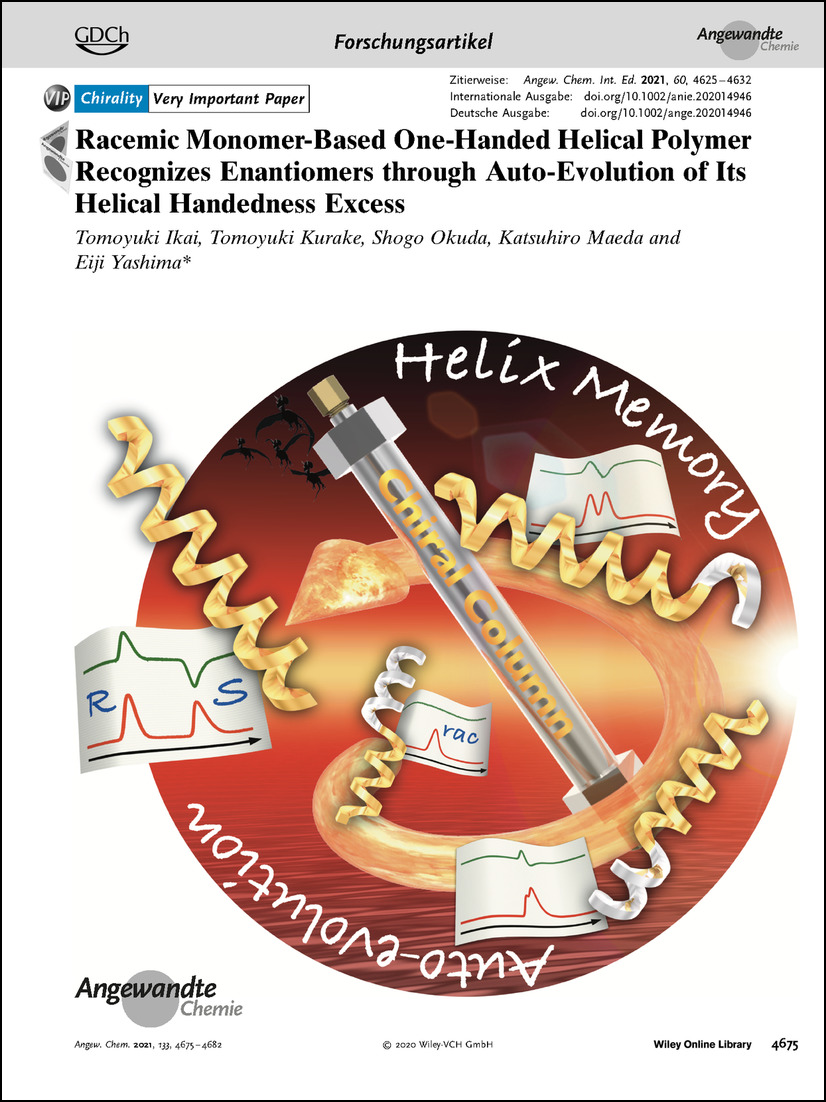
Molekulare Erkennung Im Forschungsartikel auf S. 4675 berichten Eiji Yashima et al. über ein racemisches monomerbasiertes helikales Polymer, das Enantiomere durch Autoevolution seines helikalen Händigkeitsüberschusses erkennt.
Graphisches Inhaltsverzeichnis
Graphisches Inhaltsverzeichnis: Angew. Chem. 9/2021
- Pages: 4433-4453
- First Published: 16 February 2021
Highlights
Synthesemethoden
Zu guter Letzt: Die Me3Si-Gruppe als ein getarnter Alkohol
- Pages: 4456-4458
- First Published: 26 January 2021
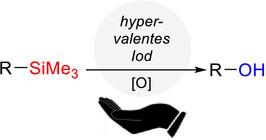
Die Me3Si-Gruppe wird schon lange aus der Familie ihrer aryl- und heteroatomsubstituierten Artgenossen ausgegrenzt, da sie sich nur schwer chemoselektiv in eine andere, synthetisch nützliche funktionelle Gruppe umwandeln lässt. Es wurde nun gezeigt, dass ein hypervalentes Iodreagens mittels elektrophiler Demethylierung genau das erreicht. Im Zusammenspiel mit der Tamao-Fleming-Oxidation wird die Me3Si-Gruppe ein Platzhalter für eine Hydroxygruppe.
Essays
Markovnikov's Rule
The Logic Behind Markovnikov's Rule: Was It an Inspired Guess? …No!
- Pages: 4460-4469
- First Published: 08 December 2020
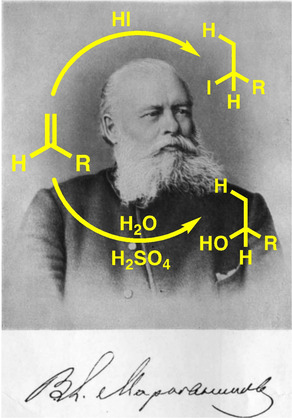
Based on Markovnikov's 1870 Annalen paper, many western authors have viewed his rule as a relatively unimportant addendum to a paper on isobutyric acid derivatives, and some have suggested that the rule itself was simply an inspired guess. In this Essay, based on an analysis of his work on the structure of the double bond in his graduate dissertations, the argument is made that it was not.
Kurzaufsätze
Solar Cells
Polymerized Small-Molecule Acceptors for High-Performance All-Polymer Solar Cells
- Pages: 4470-4481
- First Published: 19 August 2020

This Minireview describes developments in all-polymer solar cells containing a new type of n-type conjugated polymer, polymerized small-molecule acceptors (PSMAs). PSMAs combine the merits of small-molecule acceptors (narrow band gap, strong absorption, and suitable electronic energy levels) with the good film formation, higher morphology and light-irradiation stability of polymers.
Kinetic Resolution
Enzymatic Kinetic Resolution by Addition of Oxygen
- Pages: 4482-4495
- First Published: 10 October 2020
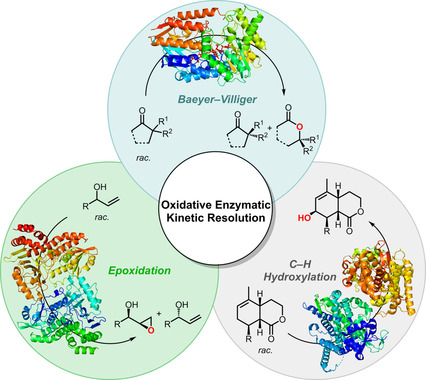
Enzymatic oxidative kinetic resolutions (OKR), in which a new oxygen atom is inserted into the substrate, are highly effective for the synthesis of enantioenriched oxygen-containing compounds. This Minireview discusses selected enzyme classes that can achieve OKR, biological advancements and protein development, and the use of these key enantioenriched intermediates in natural product synthesis.
Aufsätze
Elektrokatalyse
Intrinsische elektrokatalytische Aktivitätssteuerung von M-N-C-Einzelatom-Katalysatoren für die Sauerstoffreduktionsreaktion
- Pages: 4496-4512
- First Published: 21 April 2020
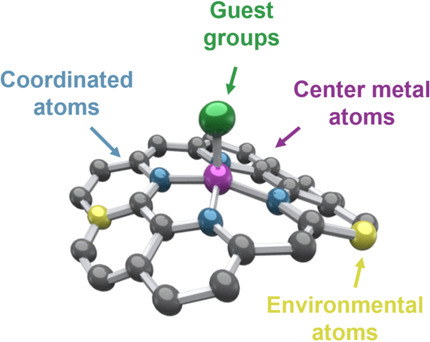
Steuerungsmethoden zur Vergrößerung der intrinsischen Aktivität von M-N-C-Einzelatom-Katalysatoren für die elektrokatalytische Sauerstoffreduktionsreaktion werden in diesem Aufsatz besprochen. Dabei lassen sich entsprechend den Katalysator-Bestandteilen vier Teilbereiche für die Optimierung unterscheiden: Metall-Zentralatome, koordinierende Ligandatome, Umgebungsatome und Gastgruppen.
Zuschriften
Nanographenes | Very Important Paper
A Stable [4,3]Peri-acene Diradicaloid: Synthesis, Structure, and Electronic Properties
- Pages: 4514-4519
- First Published: 09 November 2020
Nitride Zeolites
Synthesis of Nitride Zeolites in a Hot Isostatic Press
- Pages: 4520-4523
- First Published: 17 November 2020
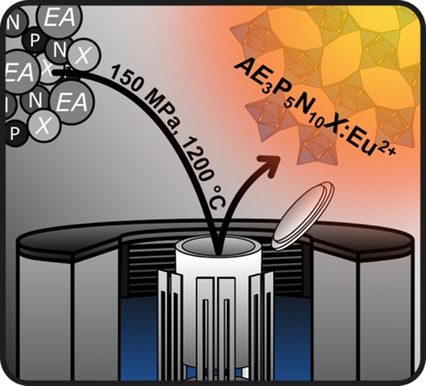
Nitridophosphate zeolites AE3P5N10X (AE=Sr, Ba; X=Cl, Br) were synthesized under medium-pressure conditions (150 MPa N2, 1200 °C), extending the range of the degree of condensation for nitridophosphates accessible by hot isostatic pressing from κ=1/3 to 1/2. AE3P5N10X:Eu2+ (AE=Sr, Ba; X=Cl, Br) reveals natural-white to deep-red emission.
Electrocatalysis | Hot Paper
Electrosynthesis of Nitrate via the Oxidation of Nitrogen on Tensile-Strained Palladium Porous Nanosheets
- Pages: 4524-4528
- First Published: 30 October 2020
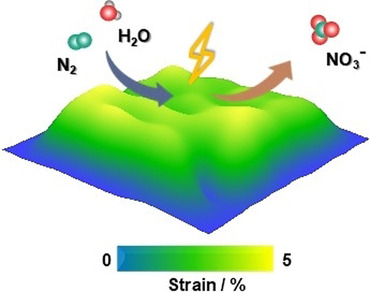
Tensile-strained palladium porous nanosheets exhibited enhanced activity for nitrogen electrooxidation to nitrate at ambient conditions. 15N isotope labeling experiments showed that nitrate originated from nitrogen electrooxidation. Electrochemical in situ characterizations and theoretical simulation revealed that the tensile strain could facilitate the formation of PdO2 active species and lead to high activity.
Homogeneous Catalysis
Gold-Catalyzed [3+2]-Annulations of α-Aryl Diazoketones with the Tetrasubstituted Alkenes of Cyclopentadienes: High Stereoselectivity and Enantioselectivity
- Pages: 4529-4534
- First Published: 23 November 2020
Supramolecular Chemistry
Glucose Binding Drives Reconfiguration of a Dynamic Library of Urea-Containing Metal–Organic Assemblies
- Pages: 4535-4540
- First Published: 20 November 2020
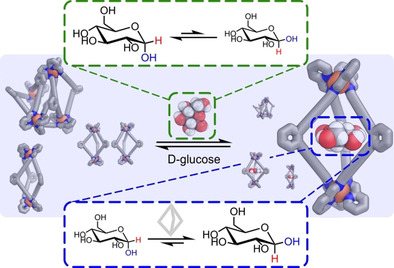
A dynamic library including an FeII4L6 irregular structure and three FeII2L3 stereoisomers was formed by subcomponent self-assembly. Glucose amplifies the formation of the (P)-FeII2L3 helicate, which in turn amplifies β-D-glucose at the expense of the α-D-anomer. Both host and guest libraries are thus geared together into a single system during equilibration.
C−C Coupling Reactions
Enantioselective Three-Component Coupling of Heteroarenes, Cycloalkenes and Propargylic Acetates
- Pages: 4541-4545
- First Published: 01 December 2020
CO2 Conversion
Unveiling the Activity Origin of Iron Nitride as Catalytic Material for Efficient Hydrogenation of CO2 to C2+ Hydrocarbons
- Pages: 4546-4550
- First Published: 18 November 2020
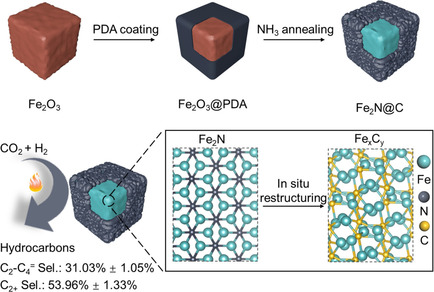
Fe2N@C core–shell nanoparticles were highly efficient for the thermal catalytic hydrogenation of CO2 with excellent C2+ selectivity of 53.96±1.33 % and outstanding lower olefins (C2-C4=) selectivity of 31.03±1.05 %. Our results revealed the in situ restructuring of Fe2N into iron carbides via a carbonyl iron-mediated conversion mechanism. Iron carbides were identified as active species for selectively converting CO2-H2 to C2+ hydrocarbons.
Synthetic Biology
Fine-Tuning Protein Self-Organization by Orthogonal Chemo-Optogenetic Tools
- Pages: 4551-4556
- First Published: 06 November 2020
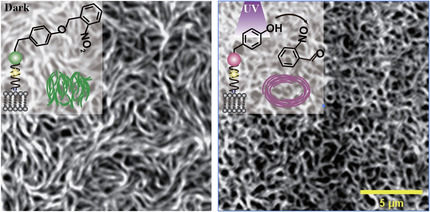
We developed orthogonal chemo-optogenetic tools as a minimal regulation strategy to fine-tune in-vitro protein self-organization with light. Our chemo-optogenetic tools are designed by orthogonal translation with an expanded genetic code. Such introduced bio-orthogonal chemical groups operate at the level of single specific amino acids, but perform tight control of enzyme activity and, thereby, the ability of protein self-organization.
Reaction Mechanisms
Acyl Donor Intermediates in N-Heterocyclic Carbene Catalysis: Acyl Azolium or Azolium Enolate?
- Pages: 4557-4561
- First Published: 02 November 2020
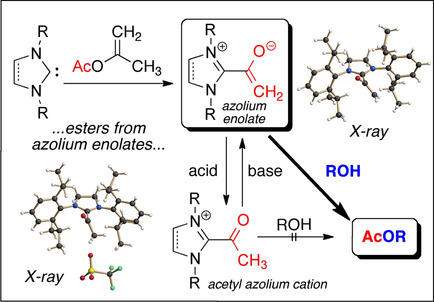
Acetyl azolium enolates resulted from the treatment of the N-heterocyclic carbenes IPr and SIPr with 2-propenyl acetate. Protonation converts them into acetyl azolium cations. The latter react with amines faster than with alcohols, while the azolium enolates reacted readily with alcohols, but sluggishly with amines. The use of a d3-acetyl azolium triflate indicated that alcohol acetylation occurs at the azolium enolate stage.
Systems Chemistry | Hot Paper
Signaling in Systems Chemistry: Programing Gold Nanoparticles Formation and Assembly Using a Dynamic Bistable Network
- Pages: 4562-4567
- First Published: 02 October 2020
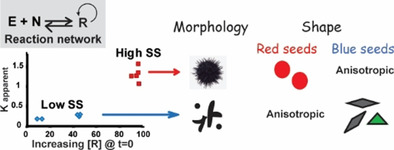
A peptide-based bistable reaction network was programmed to control a cascade reaction influencing Au nanoparticle morphology, self-assembly kinetics, and shape. This study offers a clear demonstration of how bridging the fields of systems chemistry and nanotechnology can expand our repertoire of functional materials.
Carbon Suboxide Anion | Hot Paper
Generation and Characterization of the C3O2− Anion with an Unexpected Unsymmetrical Structure
- Pages: 4568-4573
- First Published: 19 November 2020
Polysaccharide Mimics | Very Important Paper
Control of Crystallinity and Stereocomplexation of Synthetic Carbohydrate Polymers from d- and l-Xylose
- Pages: 4574-4578
- First Published: 22 November 2020
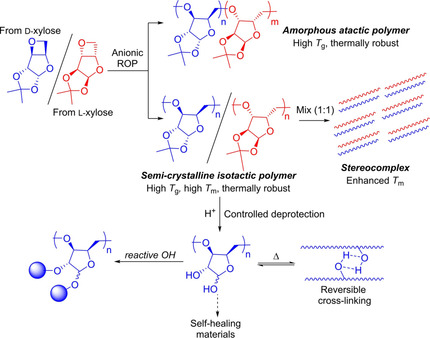
Synthetic carbohydrate polyethers, which are polysaccharide mimics, are synthesised by regioregular anionic ring-opening polymerisation of oxetanes produced from d- or l-xylose. By exploiting the chirality of xylose and varying stereochemical composition, the crystallinity of the resulting materials can be controlled. Mixing together homochiral polymers of opposite configuration results in a stereocomplex with enhanced thermal properties.
Photoactivation
Light-Activated Electron Transfer and Catalytic Mechanism of Carnitine Oxidation by Rieske-Type Oxygenase from Human Microbiota
- Pages: 4579-4584
- First Published: 12 November 2020
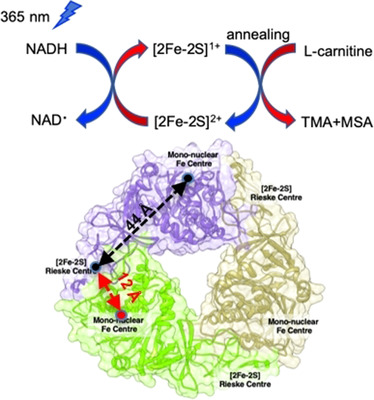
Using photoactivated NADH and EPR spectroscopy, a method to monitor the changes in redox state(s) of the metal centers in the multi-component, non-heme enzymes was developed. Combined with annealing, the detailed mechanism of the catalytic conversion of carnitine into TMA and MSA by AbCntA/AbCntB in the human microbiota are investigated.
Cationic Polymerization
Hydrogen Bond Donor Catalyzed Cationic Polymerization of Vinyl Ethers
- Pages: 4585-4589
- First Published: 02 November 2020

A unique combination of hydrogen bond donor (HBD) and acid catalysis enabled rapid vinyl ether polymerization under an ambient atmosphere. This controlled polymerization furnished polymers with molecular weights above 60 kg mol−1. Importantly, several key intermolecular interactions between the organic acid and HBD were crucial for successful polymerization.
Anion-Sealed Capsules | Hot Paper
Dodecameric Anion-Sealed Capsules based on Pyrogallol[5]arenes and Resorcin[5]arenes
- Pages: 4590-4594
- First Published: 29 December 2020
![Dodecameric Anion-Sealed Capsules based on Pyrogallol[5]arenes and Resorcin[5]arenes](/cms/asset/63ed7f97-08d6-49fb-a019-b63b2b9745df/ange202013105-toc-0001-m.jpg)
The formation of exceptionally large capsular species (diameter of c. a. 30 Å) by interactions of polyphenolic macrocycles with 5-fold symmetry with anions is reported. Pyrogallol[5]arenes and resorcin[5]arenes interact with anions via hydrogen bonds involving phenolic OH groups or aromatic CH groups. A (P5H)12(X−)60 or (R5H)12(X−)60 stoichiometry and a unique dodecahedral geometry of one of the Platonic solids is postulated.
Amyloid-β | Hot Paper
Nanoscale Hyperspectral Imaging of Amyloid Secondary Structures in Liquid
- Pages: 4595-4600
- First Published: 23 September 2020
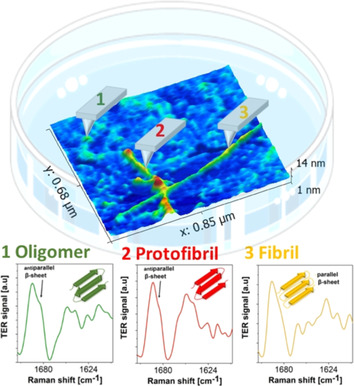
Tip-enhanced Raman spectroscopic (TERS) mapping in liquid is shown to be an efficient tool to investigate the secondary structure of the neurodegenerative peptide amyloid-β. The high heat capacity of liquid increased the capability of TERS, allowing an observation of the conformational transition from the antiparallel arrangement of β-sheets in protofibrils to parallel in fibrils, at the single aggregates level.
Metal Clusters
Silver in the Center Enhances Room-Temperature Phosphorescence of a Platinum Sub-nanocluster by 18 Times
- Pages: 4601-4604
- First Published: 17 November 2020
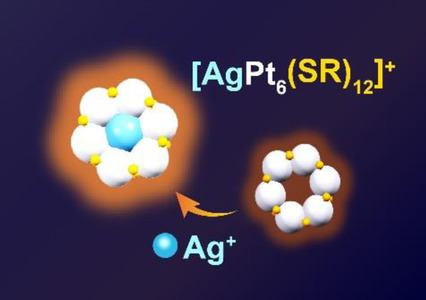
A highly luminescent Ag+ doped Pt cluster is reported. Compared to the original platinum thiolate complex, the inclusion of silver ion has boosted photoluminescent quantum yield by 18 times. The LUMO, which has the main contribution from the Ag s-orbital and Pt d-orbitals, plays a critical role in suppressing the structural distortion at the excited state.
Photocatalysis
Light-Driven Enantioselective Synthesis of Pyrroline Derivatives by a Radical/Polar Cascade Reaction
- Pages: 4605-4610
- First Published: 12 November 2020

An atom-economical strategy has been developed for the visible-light-driven synthesis of enantioenriched substituted 1-pyrroline derivatives with wide functional-group tolerance (see scheme). In this enantioselective radical approach, stereoselectivity was dictated by coordination to a chiral-at-rhodium catalyst, and water was produced as the only by-product.
Asymmetric Catalysis
Copper(I)-Catalyzed Asymmetric Interrupted Kinugasa Reaction: Synthesis of α-Thiofunctional Chiral β-Lactams
- Pages: 4611-4615
- First Published: 23 November 2020
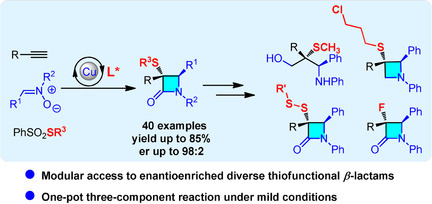
A copper(I)-catalyzed asymmetric three-component interrupted Kinugasa reaction has been developed. Diverse chiral sulfur functional chiral β-lactams with two consecutive stereogenic centers were synthesized in one step in good yields with excellent diastereo- and enantioselectivity from easily available materials.
Homogeneous Catalysis | Hot Paper
2,4,6-Triphenylpyridinium: A Bulky, Highly Electron-Withdrawing Substituent That Enhances Properties of Nickel(II) Ethylene Polymerization Catalysts
- Pages: 4616-4619
- First Published: 23 November 2020
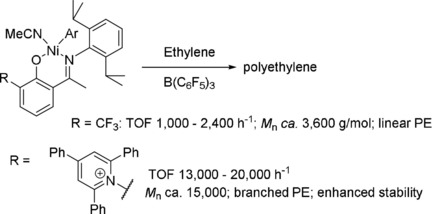
A 2,4,6-triphenylpyridinium (trippy) group is used to enhance properties of nickel olefin polymerization catalysts. Comparison with the corresponding CF3-substituted complex shows the advantages of catalysts possessing the new substituent. High steric bulk combined with powerful electron-withdrawing properties of this substituent result in increased catalytic activity and polymer molecular weight for the trippy-substituted complex.
Gas Separation
Adsorption Site Selective Occupation Strategy within a Metal–Organic Framework for Highly Efficient Sieving Acetylene from Carbon Dioxide
- Pages: 4620-4624
- First Published: 27 October 2020

Metal–organic framework (CPL-1-NH2) with keyhole-like pore apertures offers selective adsorption site properties for gas separation. Amine groups limit interactions with CO2 molecules by decreasing the enthalpy of CO2 adsorption, whereas the binding affinity of C2H2 is increased (see picture, distances in Å). CPL-1-NH2 demonstrates a remarkably high C2H2 selectivity with C2H2/CO2 (50/50) mixtures at 1 bar and 298 K.
Self-Assembly
Improving the Overall Properties of Circularly Polarized Luminescent Materials Through Arene–Perfluoroarene Interactions
- Pages: 4625-4630
- First Published: 25 November 2020

Chiral supramolecular self-assembly driven by arene–perfluoroarene (AP) interactions are demonstrated in chiral polyaromatic hydrocarbons and octafluoronaphthalene. They exhibit a large figure of merit for boosting circularly polarized luminescence. The AP interaction amplifies both ground-state and excited-state chirality. Due to the high energy barrier of octafluoronaphthalene, the photoluminescence quantum efficiency of the AP complex could be significantly enhanced.
2-Norbornyl Cation | Hot Paper
In Situ Observation of Non-Classical 2-Norbornyl Cation in Confined Zeolites at Ambient Temperature
- Pages: 4631-4637
- First Published: 03 December 2020
Single-Atom Catalysis | Very Important Paper
Almost 100 % Peroxymonosulfate Conversion to Singlet Oxygen on Single-Atom CoN2+2 Sites
- Pages: 4638-4643
- First Published: 21 November 2020
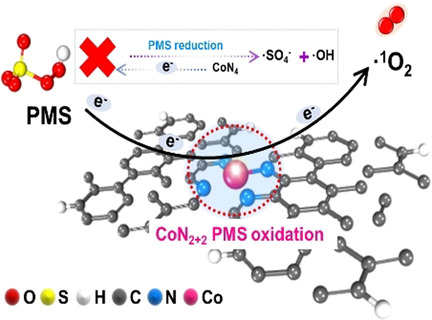
In PMS activation 1O2 becomes the predominant reactive oxygen species mediated by single-atom CoN2+2 sites. The weakly positive Co atoms and CoN2+2 coordination direct PMS oxidation by a non-radical pathway with simultaneous 1O2 generation. This work is beneficial for rational regulation of 1O2 generation at the atomic level.
Radical Chemistry
A Stable Triplet-Ground-State Conjugated Diradical Based on a Diindenopyrazine Skeleton
- Pages: 4644-4648
- First Published: 25 November 2020
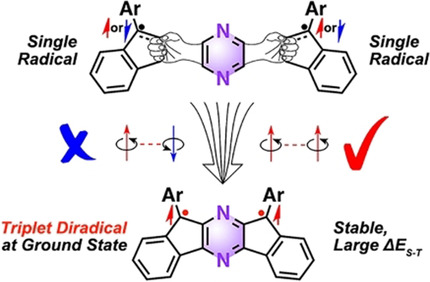
A stable triplet-ground-state conjugated diradical with pyrazine as a linker group was synthesized with a half-life time of about 22 days under ambient conditions. The electron-deficient pyrazine unit impedes spin delocalization to the peripheral phenyl rings, which increases the spin density distribution on the central meta-pyrazine unit, leading to a large ΔES-T.
Tandem Catalysis
Enantioselective Addition of α-Nitroesters to Alkynes
- Pages: 4649-4653
- First Published: 07 January 2021
Asymmetric Catalysis | Hot Paper
Copper(I)-Catalyzed Asymmetric Vinylogous Aldol-Type Reaction of Allylazaarenes
- Pages: 4654-4658
- First Published: 20 November 2020
Total Synthesis
3-(Methoxycarbonyl)Cyclobutenone as a Reactive Dienophile in Enantioselective Diels–Alder Reactions Catalyzed by Chiral Oxazaborolidinium Ions
- Pages: 4659-4663
- First Published: 17 November 2020
Asymmetric Catalysis
Asymmetric Conjugate Addition of Chiral Secondary Borylalkyl Copper Species
- Pages: 4664-4668
- First Published: 22 November 2020

Catalytic diastereo- and enantioselective conjugate addition of chiral secondary borylalkyl copper species derived from borylalkenes in situ to α,β-unsaturated diesters provides enantioenriched alkylboron compounds containing two contiguous carbon stereogenic centers in good yield with high diastereo- and enantioselectivity.
Elektrokatalyse
Ruthenaelektro-katalysierte Domino-Drei-Komponenten-Alkinanellierung für nützliche Isochinolin-Synthesen
- Pages: 4669-4674
- First Published: 03 December 2020
Forschungsartikel
Chirality | Very Important Paper
Racemic Monomer-Based One-Handed Helical Polymer Recognizes Enantiomers through Auto-Evolution of Its Helical Handedness Excess
- Pages: 4675-4682
- First Published: 25 November 2020
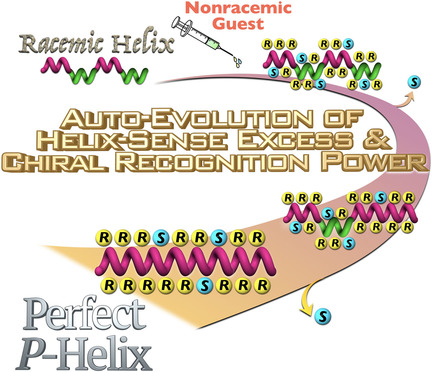
A racemic monomer-based polyacetylene folds into a one-handed helix assisted by a nonracemic alcohol through auto-evolution of its helical handedness over time, accompanied by successive enhancement of its optical purity adsorbed on the helical polyacetylene. The one-handed helical polyacetylene with the static helicity memory separates various enantiomers in liquid chromatography.
Structure Elucidation | Hot Paper
Superseding β-Diketiminato Ligands: An Amido Imidazoline-2-Imine Ligand Stabilizes the Exhaustive Series of B=X Boranes (X=O, S, Se, Te)
- Pages: 4683-4689
- First Published: 29 November 2020

The new N,N′-chelating amido imidazoline-2-imine ligand (HAmIm) was designed to supersede the widely employed β-diketiminato ligand (HNacNac). The superior stability of the HAmIm system is exemplified for a series of chalcogenoboranes with confirmed B=X double bonds (X=O, S, Se, Te), which are isoelectronic and isolobal to ketones, including their heavier analogues.
Oxygen Evolution Reaction | Hot Paper
Facile Access to an Active γ-NiOOH Electrocatalyst for Durable Water Oxidation Derived From an Intermetallic Nickel Germanide Precursor
- Pages: 4690-4697
- First Published: 10 November 2020

A xanthene-based bis(germylene)-Ni complex is used as a molecular precursor for the synthesis of ultra-small NiGe nanostructures, which can generate a γ-NiOOH structure with intercalated species. This displays exceptional catalytic activity and long-term durability for the oxygen evolution reaction (OER).
Heterocycles
Design, Synthesis, and Biological Evaluation of Chemically and Biologically Diverse Pyrroquinoline Pseudo Natural Products
- Pages: 4698-4706
- First Published: 17 November 2020

Natural product (NP) fragments are combined in unprecedented arrangements to deliver a 155-member pseudo-NP collection. Cheminformatic analysis and biological evaluation of the collection by means of phenotyping in the morphological cell painting assay and principal component analysis revealed that the pseudo-NP classes are chemically diverse with markedly different bioactivity patterns, which are dependent on connectivity and regioisomeric arrangement of the fragments.
Bioinorganic Chemistry | Very Important Paper
An ER-Targeting Iridium(III) Complex That Induces Immunogenic Cell Death in Non-Small-Cell Lung Cancer
- Pages: 4707-4715
- First Published: 20 November 2020
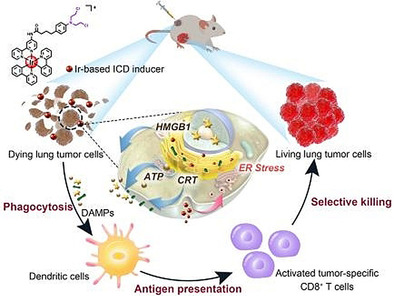
Ir1 effectively targets the endoplasmic reticulum of A549 lung cancer cells and triggers the production of ER stress and ROS production. Ir1 was demonstrated to induce multiple characteristics of immunogenic cell death (ICD) both in vitro and in an in vivo vaccination experiment. Ir1 is the first iridium(III) complex to induce ICD in non-small-cell lung cancer.
Enzyme Catalysis
S-Adenosyl-l-ethionine is a Catalytically Competent Analog of S-Adenosyl-l-methionine (SAM) in the Radical SAM Enzyme HydG
- Pages: 4716-4722
- First Published: 01 December 2020
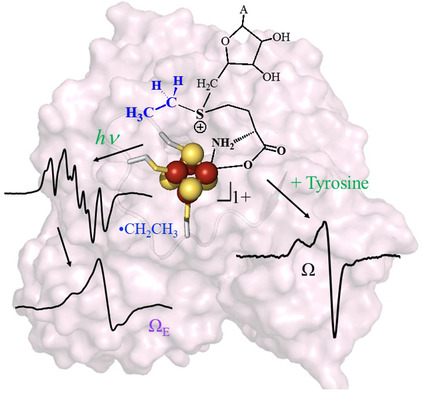
The radical S-adenosyl-l-methione (SAM) enzyme HydG can use S-adenosyl-l-ethionine (SAE) in place of SAM during catalysis. HydG reacts with SAE and tyrosine to form the organometallic intermediate Ω, similar to reaction with SAM. The SAE-bound [4Fe-4S]+ cluster of HydG undergoes cryogenic blue light photolysis to generate an ethyl radical. Upon annealing the radical forms an organometallic species in which an ethyl is bound to the unique iron of a [4Fe-4S]3+ cluster.
Oxygen Evolution Reaction | Hot Paper
Capturing Manganese Oxide Intermediates in Electrochemical Water Oxidation at Neutral pH by In Situ Raman Spectroscopy
- Pages: 4723-4731
- First Published: 08 January 2021
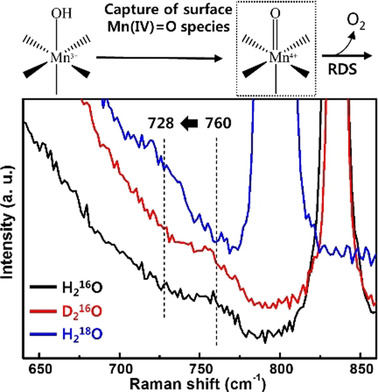
Direct capture of an intermediate species on the surface of manganese oxide nanoparticles was achieved in electrochemical water oxidation and visualized using in situ Raman spectroscopy. A Raman band position at 760 cm−1 combined with isotope-labeling experiments using H218O and D2O confirmed the generation of the surface terminal MnIV=O species, which is the water oxidation intermediate for the oxygen evolution reaction. Key: rate-determining step (RDS).
Materials Science | Hot Paper
Mg-Pillared LiCoO2: Towards Stable Cycling at 4.6 V
- Pages: 4732-4738
- First Published: 15 November 2020
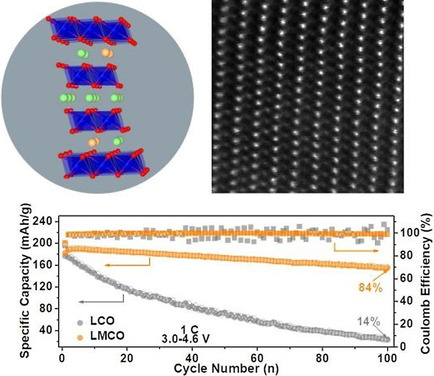
The endeavor to deliver a high specific capacity for a LiCoO2 cathode at a voltage larger than 4.35 V is challenging. The deliberately introduced Mg ions at the Li layer of LiCoO2 endow this promising cathode with high capacity (204 mAh g−1) and excellent cycling stability and rate capability within a voltage window of 3.0–4.6 V.
Mitochondrial Pathways
Assembly of The Mitochondrial Complex I Assembly Complex Suggests a Regulatory Role for Deflavination
- Pages: 4739-4747
- First Published: 15 December 2020
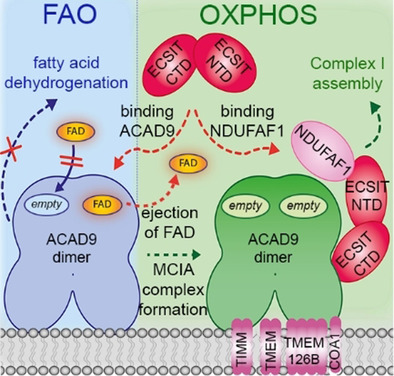
Fatty acid oxidation (FAO) and oxidative phosphorylation (OXPHOS) are key mitochondrial pathways for cellular energetics. However, the crosstalk between them is unclear. We show that the molecular architecture of the mitochondrial Complex I assembly (MCIA) complex, required for Complex I biogenesis and thereby for activation of OXPHOS, implies an allosteric deflavination mechanism that shuts down FAO.
Homogeneous Catalysis | Hot Paper
Visible-Light-Enabled Enantioconvergent Synthesis of α-Amino Acid Derivatives via Synergistic Brønsted Acid/Photoredox Catalysis
- Pages: 4748-4754
- First Published: 20 November 2020

A radical addition reaction between glycine esters and racemic α-bromoketones catalyzed by synergistic Brønsted acid/photoredox catalysis is presented. This dual catalysis controls the reactive radical intermediate and iminium ion to facilitate the bond-forming event in a highly stereochemical manner. An array of valuable enantioenriched unnatural α-AAs bearing two contiguous stereocenters are accessible.
Self-Assembly | Hot Paper
Molecular Cages Self-Assembled by Imine Condensation in Water
- Pages: 4755-4761
- First Published: 30 November 2020
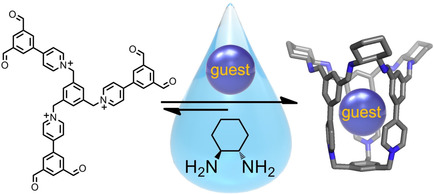
By taking advantage of multivalence and ligand preorganization, a series of basket-shaped cages are self-assembled by imine condensation in water. These cages are rather stable and inert against hydrolysis, and therefore they are able to take advantage of the hydrophobic effect for guest recognition.
Heterogeneous Catalysis | Hot Paper
Efficient Catalysts for the Green Synthesis of Adipic Acid from Biomass
- Pages: 4762-4769
- First Published: 23 November 2020

We present efficient catalysts for green and sustainable synthesis of adipic acid from biomass-derived glucose via glucaric acid. Pt/CNT with smaller (2.5 nm) Pt nanoparticles catalyzes the selective oxidation of glucose to glucaric acid. A bifunctional Pd-ReOx/AC catalyst offers 99 % yield of adipic acid from glucaric acid; the overall yield of adipic acid reaches 81 %.
Theranostics
Photoacoustic Cavitation-Ignited Reactive Oxygen Species to Amplify Peroxynitrite Burst by Photosensitization-Free Polymeric Nanocapsules
- Pages: 4770-4781
- First Published: 19 November 2020

Photosensitization-free polymeric nanocapsules are activated by photoacoustic cavitation via pulsed laser irradiation to generate distinct reactive oxygen species, which spontaneously react with in situ released nitric oxide to burst highly cytotoxic peroxynitrite, achieving prominent therapeutic efficacy. This work provides a promising modality for precision disease theranostics via extensive photosensitization-free materials.
Molecular Electronics
Environmental Control of Single-Molecule Junction Evolution and Conductance: A Case Study of Expanded Pyridinium Wiring
- Pages: 4782-4789
- First Published: 18 November 2020
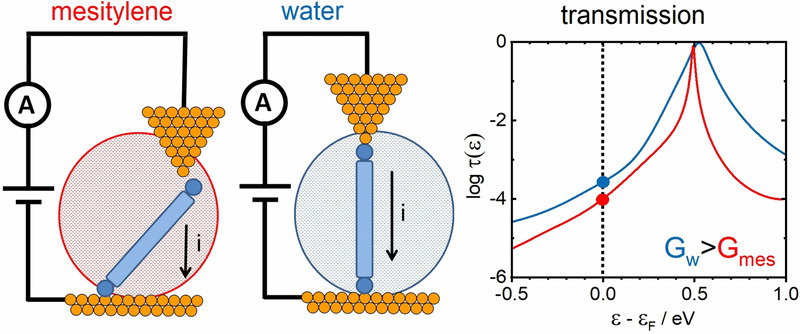
Single-molecule junction conductance can be efficiently tuned by solvent environment. A series of expanded pyridinium molecular wires gave higher conductance with fully extended junction geometries in solvating water environment as opposed to mesitylene solvent. Environmental control efficiently operates the molecule–electrode interactions.
C−H Oxidation
General Access to Modified α-Amino Acids by Bioinspired Stereoselective γ-C−H Bond Lactonization
- Pages: 4790-4796
- First Published: 19 November 2020
Nanomaterials
Tailored Catalytic Nanoframes from Metal–Organic Frameworks by Anisotropic Surface Modification and Etching for the Hydrogen Evolution Reaction
- Pages: 4797-4805
- First Published: 20 November 2020
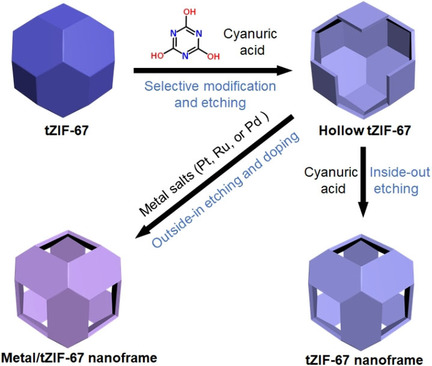
CA molecules can anisotropically modify and protect the {110} facets of the tZIF-67 crystal from etching, causing the six {100} facets be selectively etched via an inside-out manner, and finally forming the hollow nanoframes. The surface modified hollow tZIF-67 can further be facet-selectively etched by metal salts in an outside-in manner to give metal-doped tZIF-67 nanoframes.
Methanol Dehydrogenation
Observation of the Reaction Intermediates of Methanol Dehydrogenation by Cationic Vanadium Clusters
- Pages: 4806-4813
- First Published: 17 November 2020
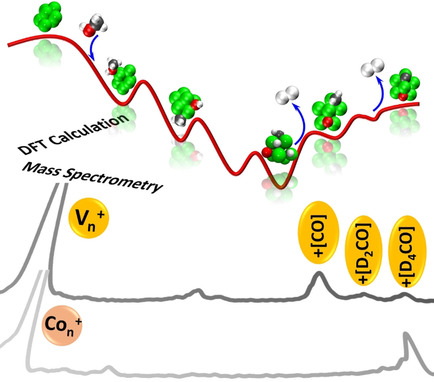
Strikingly different reactivity of vanadium and cobalt cationic clusters towards methanol in a low-pressure collision cell is observed by mass spectrometry. Metastable or kinetically trapped reaction intermediates of the methanol reaction with vanadium cationic clusters are verified, and their structures are proposed by exploring the reaction pathways using density functional theory calculations.
Single-Atom Catalysis
Observing Single-Atom Catalytic Sites During Reactions with Electrospray Ionization Mass Spectrometry
- Pages: 4814-4823
- First Published: 18 November 2020
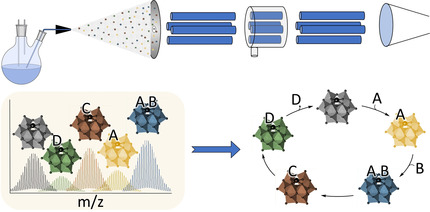
Observing single-atom catalytic sites during reactions: Single-atom catalysts supported on soluble polyoxometalates have been investigated under reaction conditions by electrospray ionization mass spectrometry. This enables us to observe the exact composition and stoichiometry of active sites as well as their dynamics during CO and alcohol oxidation reactions. Even the apparent activation barriers between intermediates become accessible.
Perovskites
A Resol-Assisted Cationic Coordinative Co-assembly Approach to Mesoporous ABO3 Perovskite Oxides with Rich Oxygen Vacancy for Enhanced Hydrogenation of Furfural to Furfuryl Alcohol
- Pages: 4824-4831
- First Published: 26 November 2020
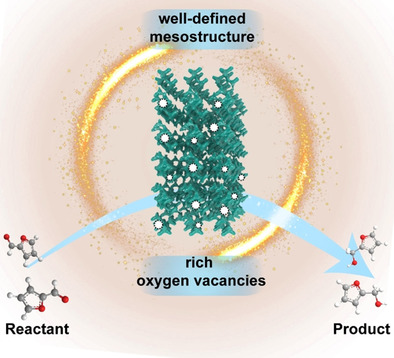
An effective and versatile strategy to construct mesoporous ABO3 perovskite oxides via a resol-assisted cationic coordinative co-assembly approach is developed. The as-prepared mesoporous LaMnO3 with functionalized nanocrystal frameworks and abundant oxygen vacancy sites as catalyst exhibits remarkable catalytic activity and stability for catalytic transfer hydrogenation of furfural to furfuryl alcohol.
Biosensors
Selection and Characterization of an RNA-Cleaving DNAzyme Activated by Legionella pneumophila
- Pages: 4832-4838
- First Published: 13 November 2020
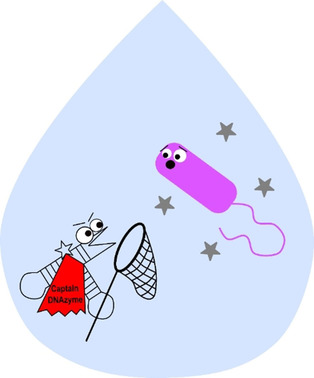
Legionella pneumophila is a pathogenic bacterium that exists in naturally occurring and man-made water sources. Contaminations with these bacteria in cooling towers have led to fatal disease outbreaks. An RNA-cleaving fluorogenic DNAzyme was isolated and found to selectively recognize Legionella pneumophila bacteria in cooling tower water. RNA-cleaving DNAzymes are synthetic DNA enzymes that can be easily incorporated into biosensor designs.
Metal-Organic Frameworks
Persistent Radical Tetrathiafulvalene-Based 2D Metal-Organic Frameworks and Their Application in Efficient Photothermal Conversion
- Pages: 4839-4845
- First Published: 25 November 2020
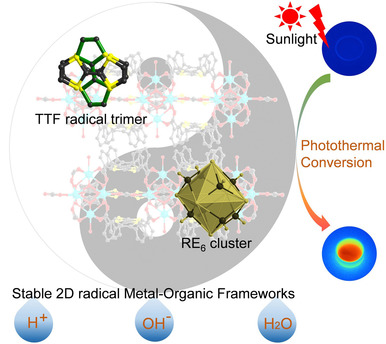
The incorporation of TTF radical trimers and RE6 cluster SBUs result in a stable 2D radical MOF that is stable under harsh conditions including aqueous acid/base solutions. Exhibiting the characteristics of light absorption and excellent stability, the radical Dy-MOF shows excellent photothermal conversion with an increase in temperature of 34.7 °C upon irradiation by one unit of sunlight within 240 s.
Nitrides
C−H Activation by an Iron-Nitrido Bis-Pocket Porphyrin Species
- Pages: 4846-4853
- First Published: 17 November 2020
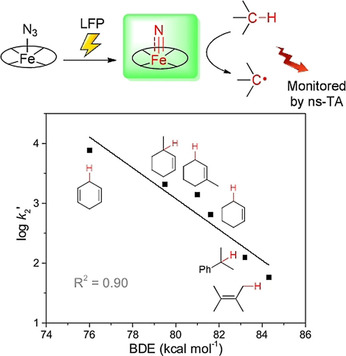
A reactivity study on the hydrogen atom transfer (HAT) reaction between C−H substrates and an Fe-nitrido porphyrin species was achieved by employing nanosecond laser flash photolysis and by using a bis-pocket porphyrin ligand. Thermodynamic and kinetic parameters obtained in this study are fundamentally important for designing C−H amination and N2 fixation reactions involving Fe-nitrido intermediates.
Transition-Metal Complexes
The Electron Transfer Process in Mixed Valence Compounds with a Low-lying Energy Bridge in Different Oxidation States
- Pages: 4854-4864
- First Published: 23 November 2020
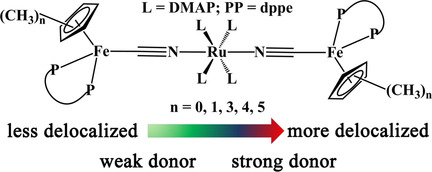
For the R+-B-R (R is the redox center and B is the bridging ligand) mixed-valence system with a low-lying energy bridge, the energy difference (ΔG0) between the bridge state (R-B+-R) and mixed-valence states (R+-B-R or R-B-R+) could be effectively tuned and even become zero by the fine modification of donor substitution.
Photocatalysis | Hot Paper
Ultrathin Porous Carbon Nitride Bundles with an Adjustable Energy Band Structure toward Simultaneous Solar Photocatalytic Water Splitting and Selective Phenylcarbinol Oxidation
- Pages: 4865-4872
- First Published: 03 November 2020
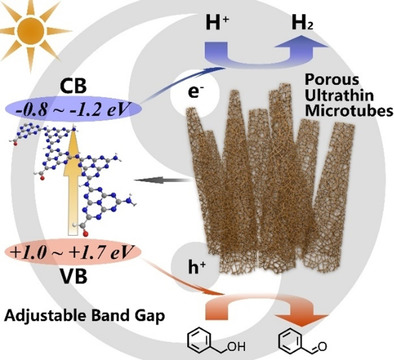
Ultrathin porous carbon nitride bundles were designed based on the pyrolysis of asymmetric supramolecular precursor from L-arginine and melamine. It has a high specific surface area and adjustable band gap. Through the coupling of water-splitting and phenylcarbinol oxidation, the efficiency of hydrogen evolution was promoted and phenylcarbinol oxidation was activated.
Organocatalysis
London Dispersion Interactions Rather than Steric Hindrance Determine the Enantioselectivity of the Corey–Bakshi–Shibata Reduction
- Pages: 4873-4882
- First Published: 18 November 2020

London dispersion (LD) interactions facilitate the enantioselectivity in the Corey–Bakshi–Shibata (CBS) reduction. Employing a combination of computational and experimental studies, we provide a modern view on the origin of enantioselectivity in this powerful organocatalyzed reaction. The results demonstrate that attractive LD interactions between the catalyst and the substrate rather than steric repulsion determine the selectivity.
Main Group Chemistry | Hot Paper
Phenylpyridyl-Fused Boroles: A Unique Coordination Mode and Weak B−N Coordination-Induced Dual Fluorescence
- Pages: 4883-4890
- First Published: 24 November 2020
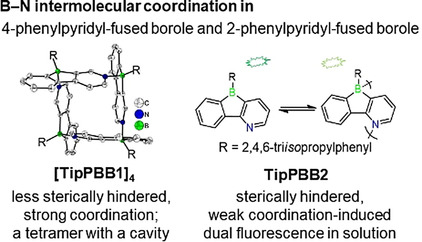
Phenylpyridyl-fused boroles [TipPBB1]4 and TipPBB2 were synthesized and their properties investigated. [TipPBB1]4 forms a tetramer in both the solid state and solution. TipPBB2 contains a 4-coordinate boron atom in the solid state but dissociates to give a 3-coordinate boron species in solution. TipPBB2 shows interesting temperature-dependent dual fluorescence in solution because of the equilibrium between 3- and 4-coordinate boron species due to weak N⋅⋅⋅B intermolecular coordination.
Anticancer Drugs | Hot Paper
Sulfur-Coordinated Organoiridium(III) Complexes Exert Breast Anticancer Activity via Inhibition of Wnt/β-Catenin Signaling
- Pages: 4891-4898
- First Published: 26 November 2020
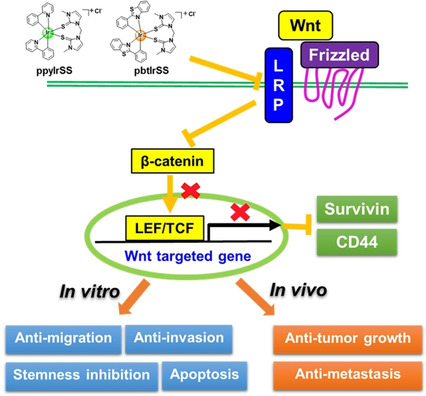
The effects of sulfur-coordinated organoiridium(III) complexes were explored with respect to Wnt/β-catenin signaling, apoptosis, migration, invasion and “stemness” in breast cancer cells for the first time. pbtIrSS exerted appreciable anti-tumor and anti-metastatic activities in breast cancer cells by inhibiting Wnt/ β-catenin signaling and cancer stem cells.
Nonlinear Optical Materials | Hot Paper
Designable Al32-Oxo Clusters with Hydrotalcite-like Structures: Snapshots of Boundary Hydrolysis and Optical Limiting
- Pages: 4899-4904
- First Published: 30 November 2020
Sodium-Ion Batteries
Strategies for Mitigating Dissolution of Solid Electrolyte Interphases in Sodium-Ion Batteries
- Pages: 4905-4913
- First Published: 10 November 2020
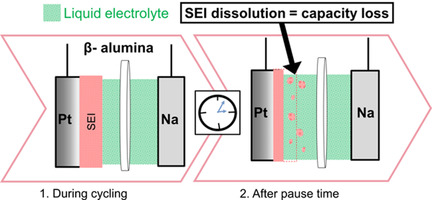
The formation and dissolution of the solid electrolyte interphase (SEI) in sodium-based systems is studied using a new cell setup. As a separator, β-alumina is employed as a sodium-conductive membrane to avoid crosstalk between the working electrode and sodium-metal counter electrode. The SEI dissolution in different time domains is tested and mitigated with new additive strategies. A correlation between SEI dissolution and SEI chemistry is presented.
CO2 Reduction
Stable Dioxin-Linked Metallophthalocyanine Covalent Organic Frameworks (COFs) as Photo-Coupled Electrocatalysts for CO2 Reduction
- Pages: 4914-4921
- First Published: 11 November 2020
Oxygen Activation
Hot-Electron-Induced Photothermal Catalysis for Energy-Dependent Molecular Oxygen Activation
- Pages: 4922-4928
- First Published: 16 November 2020
Photochemistry
Coupling of Cu(100) and (110) Facets Promotes Carbon Dioxide Conversion to Hydrocarbons and Alcohols
- Pages: 4929-4935
- First Published: 24 November 2020
Dye-Sensitized Solar Cells | Very Important Paper
Double Fence Porphyrins that are Compatible with Cobalt(II/III) Electrolyte for High-Efficiency Dye-Sensitized Solar Cells
- Pages: 4936-4943
- First Published: 20 November 2020
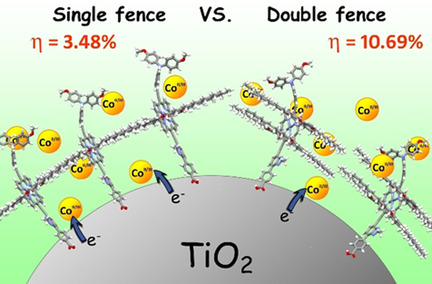
Double fence porphyrin dyes bJS1–bJS3 were designed and synthesized for high-efficiency dye-sensitized solar cells (DSSCs). Compared to typical single fence porphyrin dyes, double fence porphyrins show reduced dye aggregation and charge recombination, which has been evidenced with photovoltaic data and an improved solar cell device performance.
Nanoparticle Clusters
Unexpected Elasticity in Assemblies of Glassy Supra-Nanoparticle Clusters
- Pages: 4944-4950
- First Published: 18 November 2020
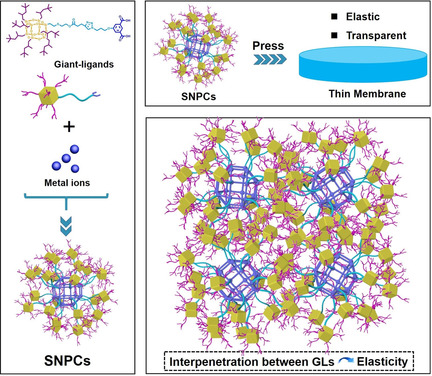
Supra-nanoparticle clusters (SNPCs) were synthesized by convergence of metal–organic polyhedron scaffolds with precise giant building blocks. The mechanical properties and structural dynamics can be regulated by fine-tuning the surface functionalization of the terminal POSS moieties. Unexpected elasticity with high Young's modulus of the OPOSS-ended SNPCs was found to be highly correlated with the interpenetration of the neighboring GLs.
Borylation Reactions
Copper-Mediated Dichotomic Borylation of Alkyne Carbonates: Stereoselective Access to (E)-1,2-Diborylated 1,3-Dienes versus Traceless Monoborylation Affording α-Hydroxyallenes
- Pages: 4951-4956
- First Published: 24 November 2020
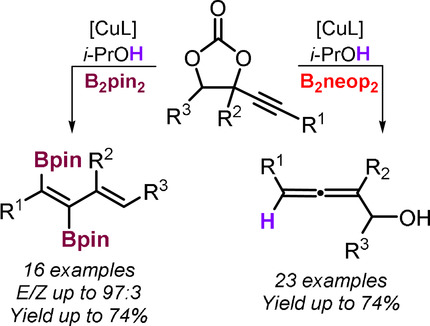
A mild copper-mediated protocol has been developed that allows for dichotomic borylation of alkynyl-substituted carbonates, affording either 1,2-diborylated 1,3-dienes or α-hydroxy allenes as the principal products, depending on the nature of the diboron(4) reagent. A mechanistic rationale is presented that reveals the crucial role of the relative kinetics of the second borylation step versus i-PrOH-assisted protodemetalation.
Single-Cell Studies | Hot Paper
Bio-Coreactant-Enhanced Electrochemiluminescence Microscopy of Intracellular Structure and Transport
- Pages: 4957-4964
- First Published: 14 November 2020
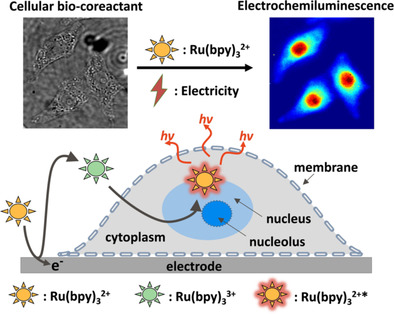
Amine-rich biomolecules as consumed coreactants drive electrochemiluminescence with Ru(bpy)32+, enabling bio-coreactant-enhanced single-cell electrochemiluminescence microscopy. This allows the imaging of intracellular hierarchical structures without the use of multiple labels. Dynamic signals disclose the universal edge effect of cellular electroporation and enable the visualization of heterogeneous molecular transport.
Antibacterial Agents
Dual-Propelled Lanbiotic Based Janus Micromotors for Selective Inactivation of Bacterial Biofilms
- Pages: 4965-4974
- First Published: 20 November 2020
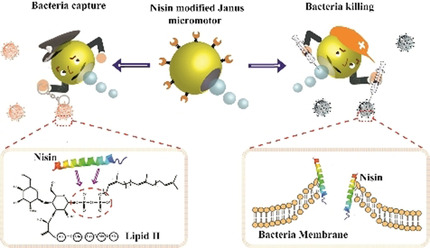
Catalytic and magnetic Janus micromotors based on 2D graphene are combined here with the lanbiotic Nisin for highly efficient capture/killing of Staphylococcus Aureus bacteria and biofilms. The strategy opens new avenues to nanoengineer micromotors with antimicrobial peptides for effective treatment of antibiotic-resistant bacteria.
Copolymere
Einfluss der Verteilung hydrophiler Monomere auf die Selbstassemblierung eines pH-responsiven Copolymers: Kugeln, Würmer und Vesikel aus einer einzigen Copolymerkomposition
- Pages: 4975-4981
- First Published: 30 September 2020
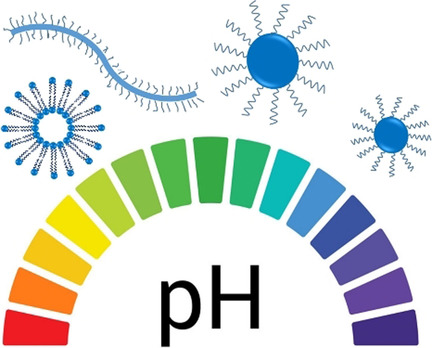
Copolymere aus Acrylsäure (AA) und Butylacrylat (BA) mit gleichmäßiger Zusammensetzung (1:1 AA:BA) und kontrollierten Zusammensetzungsprofilen zeigen, im Gegensatz zu den kinetisch gehemmten Mizellen, die durch Poly(AA-block-BA)-Blockcopolymere gebildet werden, ein dynamisches, pH-responsives Selbstassemblierungsverhalten mit reversiblen Änderungen bezüglich der Größe und Bildung von Kugel-, Wurm- und Vesikelmorphologien.
DNA-Nanostrukturen | Hot Paper
Selbstregeneration und Selbstheilung in DNA-Origami-Nanostrukturen
- Pages: 4982-4990
- First Published: 23 November 2020
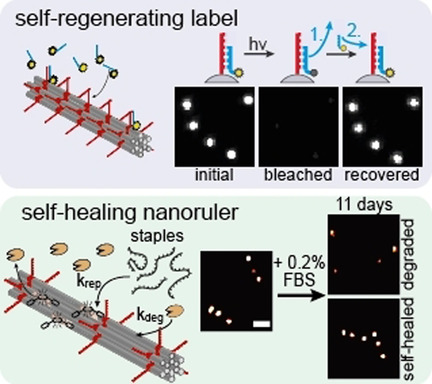
Die Selbstassemblierung und Rekonfigurierbarkeit von DNA-Origami-Nanostrukturen wird genutzt, um selbstreparierende funktionelle Nanogeräte zu realisieren. Eine selbstregenerierende Helligkeitsmarkierung wird durch den ständigen Austausch von Markiersträngen aus der Lösung realisiert. Die Selbstheilung eines DNA-Origami-Nanolineals wird durch einen Überschuss an Staple-Strängen erreicht, die beschädigte Stränge austauschen.
G-Quadruplexe | Very Important Paper
Präzise Abstandsmessungen in DNA-G-Quadruplex-Dimeren und Sandwichkomplexen über gepulste dipolare EPR-Spektroskopie
- Pages: 4991-4999
- First Published: 16 October 2020
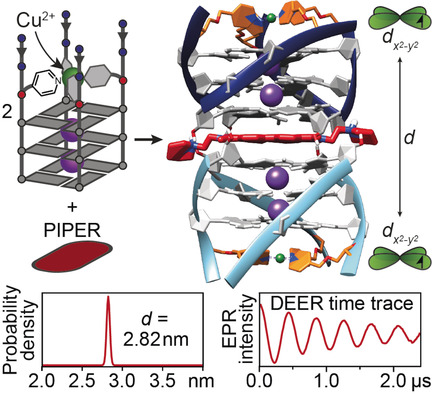
Höhergeordnete G-Quadruplexstrukturen wie Dimere und Sandwichkomplexe mit G-Quadruplexbindern werden mit gepulster dipolarer EPR-Spektroskopie untersucht. Eingebaute Cu(Pyridin)4-Komplexe ermöglichen die Messung präziser intermolekularer Cu2+-Cu2+-Abstände und decken neue Bindungsmodi auf. Die hohe Rigidität des Spinmarkers resultiert in beispiellos schmalen Peaks in den Abstandsverteilungen.




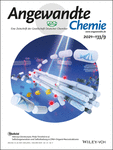
![A Stable [4,3]Peri-acene Diradicaloid: Synthesis, Structure, and Electronic Properties](/cms/asset/63e82bf1-cc82-4c20-92ba-3b0c6a81c06a/ange202012328-toc-0001-m.jpg)
![Gold-Catalyzed [3+2]-Annulations of α-Aryl Diazoketones with the Tetrasubstituted Alkenes of Cyclopentadienes: High Stereoselectivity and Enantioselectivity](/cms/asset/dc121e80-8cbe-45f0-a253-018d37c1e4cf/ange202012611-toc-0001-m.jpg)
